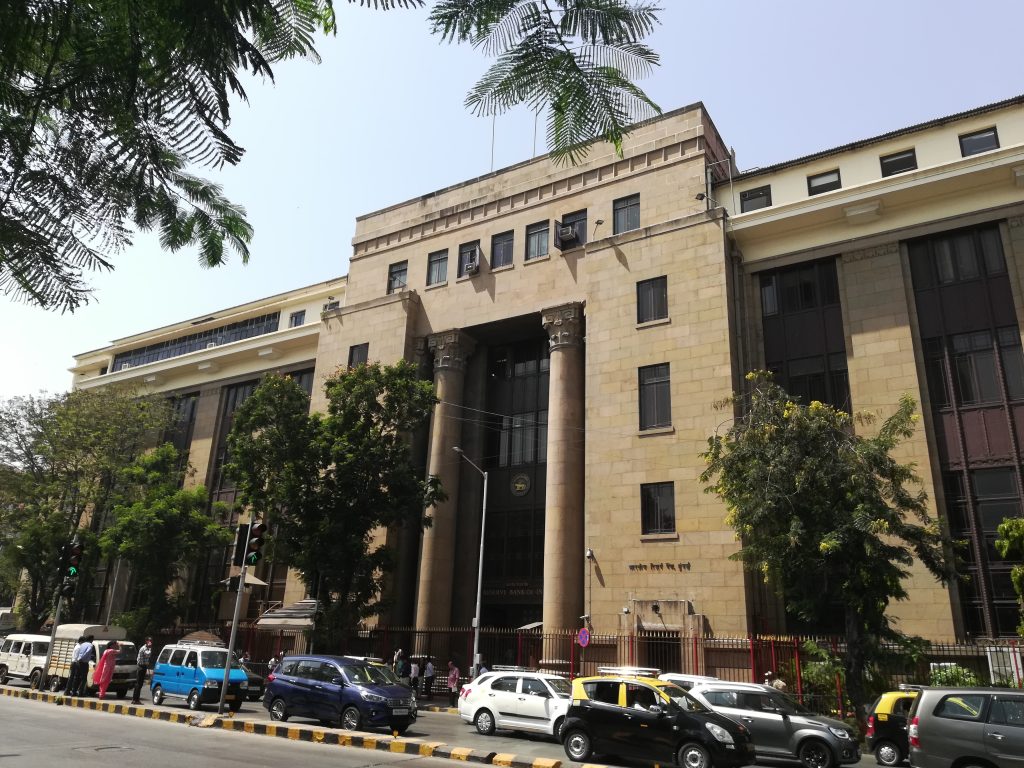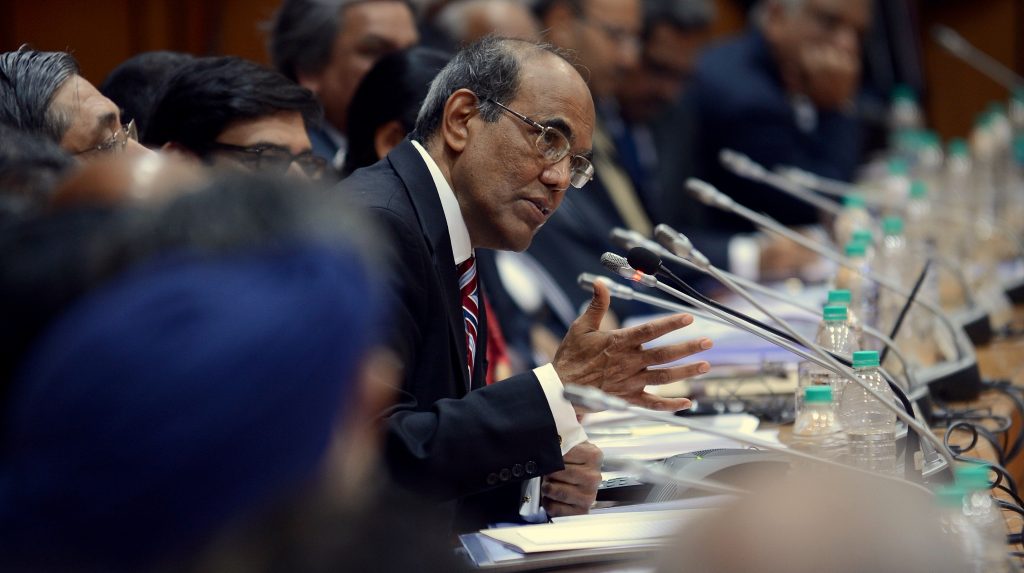
The Role of Central Banks in Managing a Crisis
Today’s macroeconomic environment is challenging on many fronts. How does it compare with previous crises, such as the Global Financial Crisis?
Dr. Duvvuri Subbarao: Dr. Duvvuri Subbarao: There are similarities and differences between the Global Financial Crisis of 2008-2009 (GFC) and the current one triggered by the pandemic and the Ukraine war. The similarity is that in a globally connected financial system, what happens anywhere affects countries everywhere. Every financial crisis triggers fear and uncertainty, causing anxiety and panic in the markets. At the heart of every crisis is the threat to financial stability. In both the above crises, central banks have mostly responded from the same playbook to restore financial stability: cutting interest rates, infusing liquidity, and communicating that they will do whatever is necessary to restore confidence to the markets.
But the current crisis is also different from the GFC in some ways. The GFC was caused by a bubble in the financial system, due to irrational exuberance in the US subprime mortgage market, and then it spread to the rest of the world. The financial crisis triggered by the pandemic originated from a virus outside the financial system. In the GFC, the shock transmitted from the financial sector to the real economy: the shock was endogenous. Whereas in the pandemic-driven financial crisis, the shock transmitted from the real economy to the financial sector: the shock was exogenous. Hence, the GFC had to be addressed from within the financial sector, with central banks at the forefront, whereas the solution to the pandemic-driven crisis had to come from science, with central banks in a holding operation. In the GFC, restoring financial stability in the US was necessary and sufficient to restore financial stability everywhere, whereas the pandemic will not end in any country until it ends everywhere.
What advice do you have for emerging economies facing more challenging economic prospects at a time of high and persistent inflation?
In a financially interconnected world, not only does pressure in the financial system of a country spread to other countries, even the measure taken by one country to manage the crisis within its borders have cross-border spillovers. This contagion effect has implications for emerging economies, mostly by way of constraining their options. Central banks in emerging economies have fewer degrees of freedom than those available to advanced economies.
For example, the objective of quantitative easing by advanced economies was to stimulate their own economies. In the event, the money was not absorbed in their domestic economies; instead it spilled over into emerging markets, putting upward pressure on their exchange rates and asset prices. When the crisis abated and inflation caught up, advanced economies reversed their monetary policies, resulting in capital outflows from emerging markets and downward pressure on their exchange rates. So emerging economies have to fight both inflation and exchange rate fluctuations, with fewer degrees of freedom.
Take India’s case right now. The Reserve Bank of India cannot ease monetary policy even if the inflation outlook suggested it should because the US Federal Reserve and the European Central Bank are still tightening, and both the dollar and euro are strong. If the RBI went in the opposite direction, there would be the risk of capital outflow causing depreciation of the exchange rate and imported inflation.
The most basic advice for emerging economies for navigating through a financially globalised world is to foster a strong, resilient macroeconomic environment. Macroeconomic stability is not something that can be achieved overnight; it is a long haul. They have got to be keeping track of this, with not just the central banks but also governments and all regulators together. Second, they have to make sure their regulation and supervision are sound and strong. They must make sure their financial institutions are adequately capitalised, and that there is no bubble forming anywhere—not just in the banking system, but in the larger financial system. Third, make sure there is no pressure in the exchange rate. The problem for India during my term was there was pressure built up in the rupee exchange rate, so when there was a trigger, it led to a sudden collapse. The fourth lesson, which stems from the Asian Financial Crisis, is that even though it may be costly, emerging markets must maintain an adequate level of foreign exchange reserves.

In the past year, inflation has spiked globally, causing a massive rise in the cost of living. In this current climate, is monetary policy alone enough to control inflation?
Experience has taught us two things. That monetary policy is not sufficient when inflation is high and persistent, as it is now, whether in advanced economies or in emerging markets. For sure, monetary policy has to be the first line of defence, and central banks have to be at the forefront. But monetary policy has to be supported by fiscal and supply policies.
Inflation, as we know, comes from demand pressures as well as supply shocks. For example, one cause of inflation today is demand pressure from stimulus measures during the pandemic. It is also the result of supply disruptions due to the war in Ukraine, the lockdown in China, disruption in supply chains, natural calamities, and so on.
Monetary policy is most efficient in combating inflation that comes from demand pressures. It is not very efficient in combating inflation coming from supply shocks. Nevertheless, it has to be a frontline measure, because if inflation is allowed to persist, inflation expectations tend to harden. In situations like this, monetary policy alone is not sufficient to reduce inflation.
What do you make of the view, expressed by former Governor of the Bank of Japan, Masaaki Shirakawa, that the first goal of the central bank should be financial stability, even before price stability?
He is absolutely right. No matter how it is actually written, the mandate of central banks boils down to price stability, financial stability, and supporting growth and employment. In normal times the inter sepriority among these different objectives varies from country to country, and within a country, from one situation to another. But in a financial crisis, the overriding priority is to restore financial stability. You cannot do anything else unless there is confidence in the markets.
In a crisis, it is also very important for governments and central banks to be acting together, and to be seen to be acting together. The public needs to get the impression that the authorities are acting together to resolve the crisis.
Duvvuri Subbarao, Former Governor of the Reserve Bank of India
You have written that central banks must communicate carefully, because their every word will be scrutinised by markets. What should central bankers pay attention to in this regard?

The theology of central bank communication has changed over the past 20 years. The orthodoxy used to be that central banks should not speak; their actions must speak for themselves. Any communication beyond action is not only unnecessary, but counterproductive.
This has changed, because of repeated crises. Central banks have learned that effective communication can in fact be a positive policy tool. Especially when they have to fight to restore market confidence.
But even in normal times, central banks have taken to communicating more actively because they have found it to be a useful tool for managing expectations.
When you tell the public that this is what we have done, these are the outcomes we are expecting, you can actually catalyse those outcomes.
That said, there are many challenges, and central banks have to be extremely careful about what they say and how they say it. When Janet Yellen was chair of the Federal Reserve and said that the Fed would be “patient” before reversing the easy money stance, everyone wanted to know what patient meant. More recently, when current Fed Reserve chair Jay Powell said inflation is “transitory”, people researched intensely on whether transitory meant three months or three years.
One lesson for central bankers is to communicate clearly and unambiguously. Ambiguity can lead to more complications rather than easing the situation. This is a delicate balancing act, because central banks should not sound any more certain than they actually are. So as much as you communicate unambiguously, you also have to communicate the extent of uncertainty you have, because communicating false certainty to the markets and the public is bad policy and can do more harm than good.
How much to communicate is also a challenge. When the US Federal Reserve was doing the first series of stress tests of banks after the GFC, there was speculation about which banks were strong and which vulnerable. The apprehension was that if the Fed Reserve released the stress test results, some banks might come under real threat. If it did not, there would be all sorts of unhelpful speculation. On the other hand, by disclosing to the public where in the financial system there are vulnerabilities, you are giving them time to prepare. For central banks, when and how to release information is an important judgement call.
During a crisis, it may be appropriate, even effective, for the government and central bank to synchronise their communication. In normal times though, central banks have to demonstrate that they are acting independently and in what they judge to be the best public interest. Central banks have to ensure that they do not leverage their credibility to turn into cheerleaders for their governments.
While central banks are expected to be independent, they come under more pressure from citizens and governments during a crisis. How can this tension be managed?
The central task for policymakers in a time of crisis is to restore stability. In normal times, central banks are very deliberative and worry about the credibility of their actions: whether their actions will have the intended impact. If the intended outcome does not materialise, the credibility cost to central banks can be quite high. In times of crisis however, central banks have got to be less cautious, less circumspect. They have to play a percentage game. They must err on doing too much rather than too little, too late.
In a crisis, it is also very important for governments and central banks to be acting together, and to be seen to be acting together. The public needs to get the impression that the authorities are acting together to resolve the crisis. If the public perceives any differences or disharmony, it will add to already prevailing fear and uncertainty and in fact accentuate the crisis.
You have long been a champion of institutional independence. Is this still important today?
Independence is a qualitative word. As an institution, the RBI is independent. In the run up to a policy meeting, it is standard practice for the RBI to consultall stakeholders such as banks, non-bank finance companies, financial markets, economists, etc. The central bank should also consult the government because the government is a big stakeholder in central bank policies. But consultation should not degenerate into acquiescence.

How you manage this balance depends on the personalities and chemistry of individuals involved: the central bank governor, the prime minister, the finance minister, and so on. At some point, you have got to communicate that a no is a no. You can be open minded to the extent that it is possible without compromising the larger public interest.
In theory, all central banks are independent. How this is actually operationalised in practice depends on the strength and culture of institutions in the country.
During your tenure at the RBI you oversaw initiatives to boost financial literacy and financial inclusion. How is financial literacy related to a country’s financial stability?
I am not aware of any concrete studies that establish causation or even correlation between the depth of financial literacy and financial stability. But heuristically I can say that every financial crisis is, in some sense, at least partly caused by ignorance or lack of awareness. People are prone to herd behaviour and irrational exuberance. They invest in risky instruments. They get duped by dubious financial institutions and fly-by-night operators.
Financial literacy can protect them to some extent, because presumably it equips them to make more informed decisions. But I would say that it is not an ironclad protection, because herd behaviour and exuberance are common human frailties that even educated, financially aware people are prone to.
What can central banks do to promote financial inclusion and bring more unbanked people into the fold?
Whether central banks, which are run with a technical mandate, should be involved in financial inclusion is a contentious question. In most emerging economies, including in India, financial inclusion is a development objective. My own view is that RBI has a role to play, in the sense that it is the regulator and supervisor of banks, financial markets, and large non-bank financial institutions. It can help ensure that there is financial inclusion, not necessarily by mandating, but through persuasion and guidance.
For instance, for a long time RBI had a branch expansion policy that said banks had to open five rural branches for each urban branch licence we gave them. The licensing regime is now gone of course. Today, we have a policy that requires 40% of bank lending to be in designated priority sectors. These are measures to give thrust to financial inclusion as broadly defined.
The common understanding of financial inclusion is getting more households into the financial system: you want to give people an account in a bank on the understanding that poorer households are eager to have a bank account because they are eager to find a safe place for their savings. This is a misperception. What the poor want is credit; insurance; remittance facilities.
During my tenure at RBI, financial inclusion in India was not taking off because we too had this mistaken understanding. But then we learnt from experience.
For instance, central banks have a responsibility to mandate “Know Your Customer” (KYC) requirements when a bank account is opened. Many people are financially excluded because they are unable to meet the KYC requirements.
The expenditure of poorer households is also lumpy; their incomes are irregular. So you have to design instruments suitable for them, such as no-frills accounts with no minimum balance requirements and a limited number of transactions a month.
Today, digital technology is contributing to financial inclusion because the cost of banking transactions has come down, while ease and convenience have gone up. The Aadhaar initiative has been a huge gamechanger as it has allowed people with no other document to establish their identity. It has been hugely empowering, especially for women.
In light of the cryptocurrency revolution, what do Central Bank Digital Currencies (CBDCs) mean for the future of central banking?
When cryptocurrencies first emerged, central banks were nonchalant. In fact, Bitcoin came out when I was Governor of RBI. Our view then was that it would not take off. But then came stablecoins, the second generation of cryptocurrencies. Unlike the first generation of cryptocurrencies, which are backed by nothing more than a computer algorithm, stablecoins are backed by real assets and track fiat currencies issued by central banks.
There is a big difference in the way advanced economies and emerging markets view these cryptocurrencies. Advanced economies do not feel threatened by cryptocurrencies. Emerging markets on the other hand fear that private cryptocurrencies will displace fiat money issued by them and put them out of the loop on economic activity. Consequently, the ability of a central bank to control money supply and interest rates will erode. It is this threat to their monetary sovereignty that emerging markets are apprehensive about.
My own take is that the 100 or so central banks around the world that are embarking on CBDCs, including the RBI, are doing it more as a defensive mechanism, to ensure that their monetary sovereignty is preserved.
It is not clear that CBDCs will take off. Digital transactions are already widely in use. I don’t see how using CBDCs will enhance user experience. Nevertheless, there is a possibility that CBDCs will reduce the cost of cross-border transactions, which currently are very expensive. That will be a huge positive.
What advice would you give to the new, up-and- coming generation of central bankers?
Central bank staff around the world, including in emerging economies, are typically top-class professionals with a formidable reputation for professional and pecuniary integrity.
But central bankers everywhere, and especially in emerging economies, are prone to tunnel vision. They know a lot about banking and finance, but they do not know much about what is happening outside. For example, if inflation has gone up from 6% to 6.5%, do you treat it as just a number? Or do you think in terms of how common people experience inflation in the marketplace?
I believe that central bankers need to get their hands dirty and expose themselves to the real world. Only then can they better appreciate their job responsibilities in a more realistic context and deliver on their mandate more effectively.
Duvvuri Subbarao , Former Governor of the Reserve Bank of India
Dr. Duvvuri Subbarao served as Governor of the Reserve Bank of India (RBI) from 2008 to 2013. Prior to that, he was Finance Secretary and Secretary to the Prime Minister’s Economic Advisory Council. Subbarao joined the Indian Administrative Service (IAS) in 1972, topping the highly competitive civil services entry examination. As a career civil servant, he worked in various positions in state and federal government. He was a Lead Economist in the World Bank (1999—2004). Subbarao’s book, “Who Moved My Interest Rate”, chronicles his experiences in leading the Reserve Bank of India through five turbulent years. After stepping down as Governor, RBI, Subbarao was a Distinguished Visiting Fellow at the National University of Singapore and the University of Pennsylvania.

Duvvuri Subbarao
Former Governor of the Reserve Bank of India
Dr. Duvvuri Subbarao served as Governor of the Reserve Bank of India (RBI) from 2008 to 2013. Prior to that, he was Finance Secretary and Secretary to the Prime Minister’s Economic Advisory Council. Subbarao joined the Indian Administrative Service (IAS) in 1972, topping the highly competitive civil services entry examination. As a career civil servant, he worked in various positions in state and federal government. He was a Lead Economist in the World Bank (1999—2004). Subbarao’s book, “Who Moved My Interest Rate”, chronicles his experiences in leading the Reserve Bank of India through five turbulent years. After stepping down as Governor, RBI, Subbarao was a Distinguished Visiting Fellow at the National University of Singapore and the University of Pennsylvania.
More Stories


Global Influence & Reputation Country Snapshot: Türkiye

